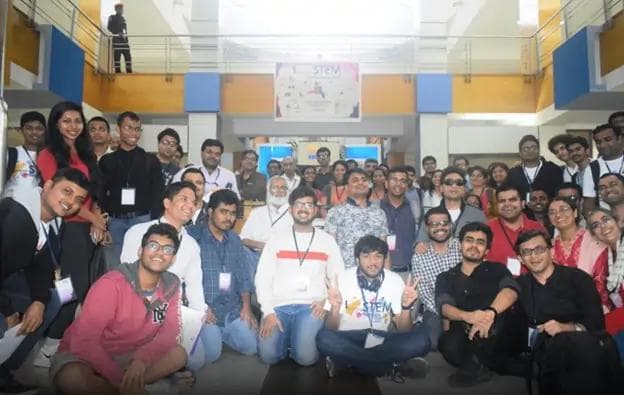AI and Machine Learning: The Future of Fraud Prevention Is Now
AI and Machine Learning: The Future of Fraud Prevention Is Now
Published by Wanda Rich
Posted on May 23, 2025

Published by Wanda Rich
Posted on May 23, 2025

By Chris Brown, President of VASS Intelygenz
Fraud is a shapeshifter. Just when businesses think they’ve caught up, it evolves to become a bigger, faster, more complex threat. Financial institutions and digital-first enterprises are seeing more than just spikes in fraudulent activity. They're witnessing a fundamental shift in how fraud is perpetrated. The challenge now is determining how companies can keep up with the rapidly changing and increasingly sophisticated methods plaguing the industry.
In this new landscape, Artificial Intelligence (AI) and Machine Learning (ML) aren’t optional. They’re essential to optimizing business workflows and can significantly enhance fraud prevention strategies. And if your organization hasn’t embedded them deeply into your processes, you’re already behind.
The Perfect Storm for AI
Fraud today spans a wide spectrum, from transaction and payment fraud to identity theft, loan fraud, cybercrime and even investment schemes. These aren’t isolated incidents. They’re complex, high-frequency events occurring across vast datasets at every hour of the day. Traditional fraud detection systems, reliant on rigid rules and historical patterns, simply can’t keep pace.
This is where ML excels. Unlike rules-based systems, ML doesn’t just learn from data, it evolves with it. By detecting patterns, surfacing anomalies and continuously optimizing its models, ML enables fraud detection systems to get smarter with each transaction. For enterprises handling millions of transactions per day, this adaptability is non-negotiable.
A Real-World Case for Custom ML
We recently partnered with a major US fintech firm who, like any other major financial institution, is exposed to significant losses due to fraud. Their problem wasn’t the absence of a system, it was the inadequacy of a commercial one, and the need for improved accuracy. Our goal was to build a custom ML-based fraud detection engine that would outperform the incumbent system on key detection accuracy metrics, at the same time as satisfying strict criteria on speed of response and volume of traffic, providing full explainability at the level of individual transactions, and integrating fully with their existing systems.
We designed a real-time scoring engine that operated under tight constraints—300 millisecond latency, at volumes up to 100 requests per second and 3 million transactions per day. The result was a custom solution with a 93% increase in the fraud detection rate compared to the incumbent system and a $110 million reduction in falsely declined transactions over a four-month shadow testing period.
The Architecture Behind Real-Time AI
One-size-fits-all AI doesn’t work in fraud prevention. Our model was tuned for binary classification—genuine vs. fraudulent—but what made the difference was how it aligned with the business: high detection rates with a low false-positive-to-true-positive ratio, all while maintaining explainability at the transaction level.
The input features for the model included not only the transaction data (raw or transformed), but importantly also a set of “historical features” that are reflective of the complex patterns of normal or fraudulent activity of all the parties involved in the transaction.
By combining multiple entities, time windows, aggregations and contextual filters, we generated more than a million potential feature combinations. We automated the full lifecycle—feature generation, selection and validation—alongside daily feature computation pipelines, continuously retraining using updated datasets from analyst dispute reviews, and deployment of competing models in production to ensure ongoing performance gains.
To overcome performance bottlenecks, we engineered a high-throughput feature computation pipeline that precomputes complex aggregations and refreshes the feature store daily, ensuring real-time access to the latest data without sacrificing speed. The architecture supports sub-300 millisecond scoring at scale, even under peak transaction loads. On top of that, we embedded explainability directly into the system, providing transparency both globally, through insights into overall model behavior, and locally, with per-transaction rationales that meet the scrutiny of internal stakeholders and external regulators alike.
AI Alone Isn’t Enough—Governance Is Key
Building an effective fraud prevention system isn’t just about data science. It demands a strong foundation of governance, transparency and operational discipline. It starts with data readiness. High-quality, well-governed data is essential—and consistency, reliability and clear documentation are crucial.
While automation plays a critical role in managing volume, it must be complemented by human supervision. A human-on-the-loop approach ensures that edge cases are addressed thoughtfully and that feedback from analysts continues to refine and improve the model over time.
Fairness and compliance are non-negotiable. To avoid biased outcomes and meet regulatory standards, systems must exclude sensitive variables and maintain traceable records of model decisions. These guardrails protect both the organization and its customers.
Finally, fraud prevention systems must evolve continuously. Relying on quarterly updates is no longer sufficient. Models need to be responsive and adapt in near real-time to new fraud patterns and incorporate insights from every new transaction reviewed. Only through this level of agility can organizations stay ahead in the race against fraud.
Operational Excellence is the Differentiator
The most transformative AI systems don’t just detect, they adapt. Our architecture is built for precisely that kind of evolution. By automating every stage of the model lifecycle, from feature computation and data refresh to retraining and deployment, we’ve created a self-improving system that incorporates real-world feedback in near real time.
Every analyst-reviewed transaction feeds back into the system, generating updated datasets and triggering retraining workflows. Competing models are automatically evaluated in parallel production environments, ensuring only the highest-performing models are promoted. The continuous loop of optimization allows fraud detection to stay aligned with ever-changing patterns without requiring constant manual intervention.
To be effective, these models must represent an infrastructure for resilience, engineered for scale, built for agility and governed for trust.
Fraud Won’t Wait, Neither Should You
AI is no longer an emerging trend—it’s an operational imperative. Businesses that fail to act decisively on the best available tools risk falling prey to increasingly sophisticated fraud tactics and being outpaced by more agile, AI-savvy competitors.
Fraudsters are already using AI to their advantage. The only question that remains is: are you?
Explore more articles in the Technology category











